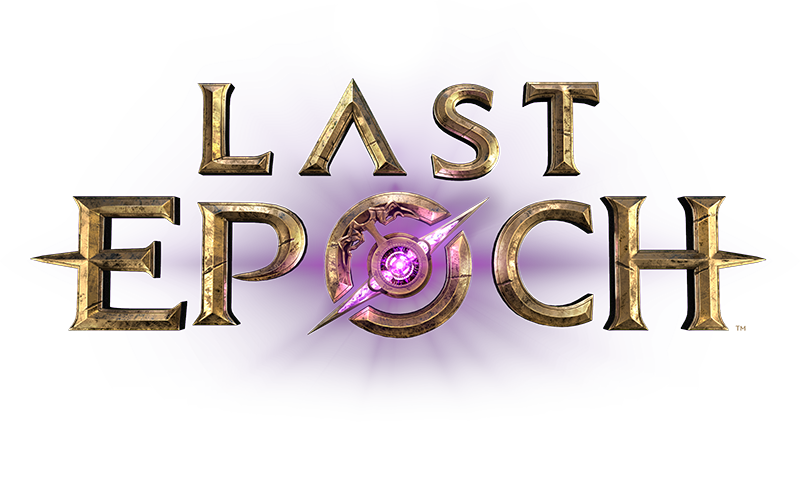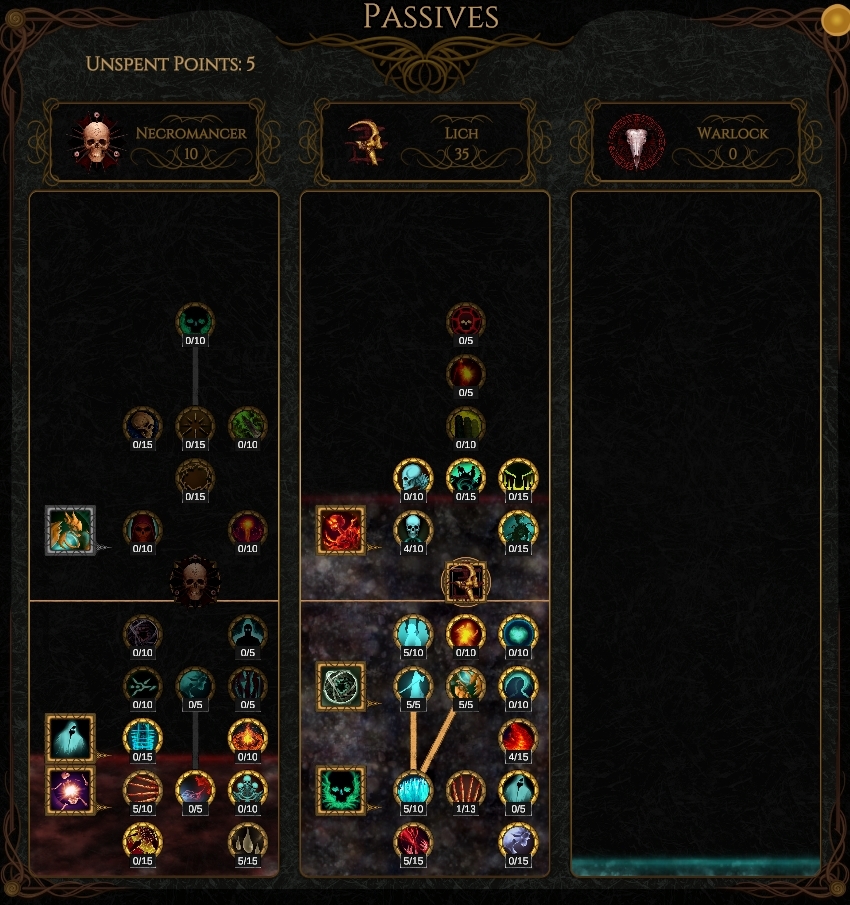We’ve been teasing this announcement for a while, now officially announcing the overhaul of the passive system! This post outlines our design process for the new passive system, and what we learned from the passive grid.
This is the passive grid, it had a lot of things we liked about it, but it also had some major problems.

The first problem, and one of the biggest was of communication. Most people could not look at the passive grid and intuitively understand how it worked. Expanding the area nodes could be acquired in by extending the axes was fairly unique, but that also meant people didn’t have a good reference point for how the system worked. With some explanation most players could get the hang of it, but with as important as a passive system is in an ARPG, having one that was unintuitive was not ideal
The next issue was having two kinds of points. The issue with that was twofold, firstly it was confusing which was exacerbated by the way the axes worked, and secondly it increased the amount of thought required to engage with the system effectively. If you have a piece of gear with 46 armor, and you find a piece of gear with 46 armor and 10 health you know that’s an upgrade. With the axes/area system you have to make tradeoffs between different axes based on their own stats as well as what nodes they grant access to, which significantly discourages developing your build as you go. While planning a build should be more optimal, the system shouldn’t punish experimentation.
The last main issue of the passive grid was the mastery system. The passive grid did not have a good way to incorporate specializing your mastery and continuing your progress on the passive grid. We could have empty areas on the grid that got filled in when you chose your mastery, we could have the passive grid expand outwards, or we could have a separate passive tree for your base class and your mastery; None of these were good options. Having empty areas that filled in wouldn’t work because you couldn’t make informed decisions about which axes you expanded if there were nodes you didn’t know about, expanding the tree wouldn’t work for the same reason. Having a separate grid for the mastery would be better, but displaying it well would be hard and it would feel a bit tacked on.
Now that I’ve told you all about the problems of the passive system, let’s talk about the good.
The main thing we knew we had to keep in any passive system was nodes, particularly ones with mechanical effects beyond stats. Nodes are a great way of showing incremental progress and giving discrete understandable choices. Having mechanic-affecting nodes allows for your passives to radically change the feel of your character in more interesting ways than just raw power.
The other main carryover is dividing the nodes into areas and progressing within those areas. Having nodes grouped into areas lets them have cohesive themes and be divided around loose character archetypes. This can help guide newer players in figuring out how to build their character and reinforces different character archetypes feeling different.
Now, without further ado…. Mastery 2.0!
(note: in the final version, all three trees will have nodes)
In the new passive system, the branches of the passive tree are the three masteries of each base class. That’s right, three. We are adding five new mastery classes. This system allows us to keep the benefits of the sections of the passive grid, without having two kinds of points and being hard to understand. Progress up the tree is made by putting points into nodes, thus allowing you to reach higher nodes.
The way you choose your mastery is through lock nodes. Lock nodes are nodes part of the way up a skill tree that lock off the rest of the passive tree. Each mastery has a lock node. Once you pick one, you unlock the rest of that mastery and you are locked off from taking the lock node in the other two masteries, and subsequently the further nodes in either of the other masteries. Nodes in any mastery can be taken up to the lock nodes. This gives a lot of flexibility for builds by allowing some mixing and matching between early abilities and passives of a mastery, but still provides the concrete decision of choosing your mastery.
Previously, all skills unlocked based purely on character level. In Mastery 2.0, there are some skills tied to the base class that unlock with level, but the rest are tied to progress in each of the three passive trees. It doesn’t matter the particular nodes you take in a tree, just the total number of points you take in a tree.
Now, onto the new masteries!
Sentinel for the Knight will focus heavily on defense, utilizing armor and block to become an indestructible titan on the battlefield. How do you fight something you can’t damage?
Runemaster for the Mage will employ runes and other unique forms of elemental magic to control the battlefield. While the Sorcerer focuses on raw power, the Runemaster uses his superior technique and tactics to bend the elements to his will.
Shaman for the Primalist will focus on nature, using the power of weather to destroy his enemies with tornadoes and lightning. While the Beastmster charges ahead, the Shaman can destroy his enemies from afar, raining destruction from above.
Lich for the Acolyte will use the magics of blood and death to grow her power and annihilate any resistance. The Necromancer may be the master of the undead, but the Lich is the master of corpses.
Falconer for the Rogue uses a falcon, swooping across the battlefield to gain an advantage. With the falcon at her side, the Rogue will make quick work of her enemies.


